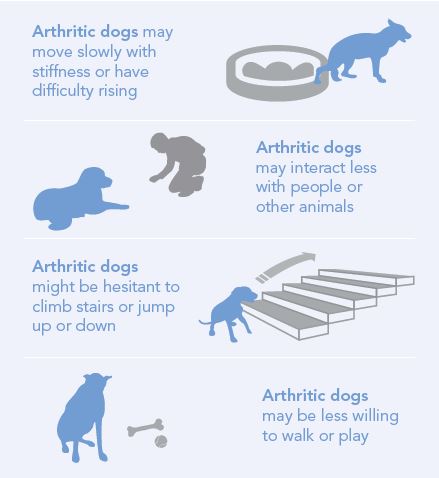WIN $10K FOR A VACAY WITH PURINA
TO ENTER: Spend $10 or more on any PURINA® product at Participating Stores
Nationwide shipping! Now with Express shipping option as well. Click here for details.
What is arthritis?
Arthritis is a degenerative joint disease where the cartilage within the joint is worn away, leading to inflammation and pain. It’s the most common cause of impaired mobility in dogs and the signs of arthritis are often incorrectly attributed to ‘slowing down due to the natural ageing process’. Dogs can be quite effective at hiding their pain which makes it difficult to recognise arthritis in its early stages. Arthritis is a lifelong condition that requires a combination of attentive home care and veterinary care.
Healthy joints (click to view): Have an unbroken layer of smooth cartilage to protect the bone from wear and tear.
Arthritis joint (click to view): The cartilage in an arthritic joint is damaged, leading to abrasion and inflammation of the underlying bone.
Dogs can be quite effective at hiding their pain which makes it difficult to recognise arthritis in its early stages. Arthritis is a lifelong condition that requires a combination of attentive home care and veterinary care.
Don’t let your dog miss out on all the fun and games of a fulfilling life as they start to get older.
Arthritis is a common cause of reduced mobility in dogs. These signs are often incorrectly attributed to the normal ageing process which means many dogs are missing out on arthritis treatments that could improve their quality of life. This guide has been designed to help you recognise the signs of arthritis and understand how to effectively manage it with the right treatment and positive lifestyle changes.

Take steps to positively change your dog’s lifestyle and reduce their arthritis symptoms.
Does your dog show signs of arthritis?
Please complete this self-evaluation and share it with our vet to help identify the potential onset of
arthritis in your dog.
If you’ve noticed any of the above behaviours, your pet may be in pain. Be sure to discuss this with our vet today to determine the best course of action. Early diagnosis, treatment and regular check ups can help your dog rediscover its youthful enthusiasm.
To contact Boehringer Ingelheim regarding their products and vet – do click here.
Great range - quick and secure delivery
Buy securely online and pickup at your local store
Call your local store and come on down to pickup
